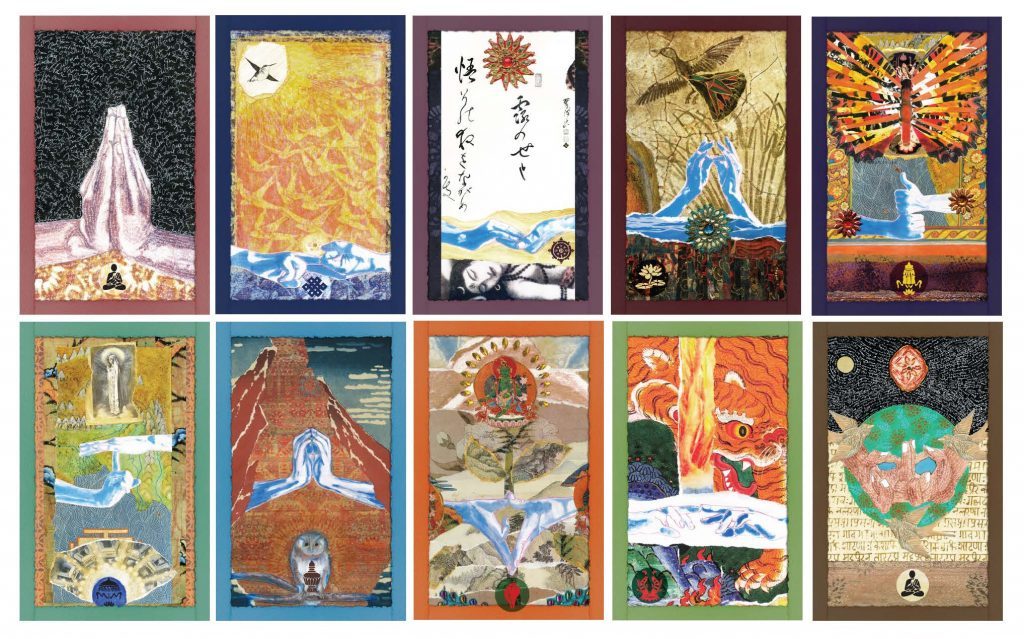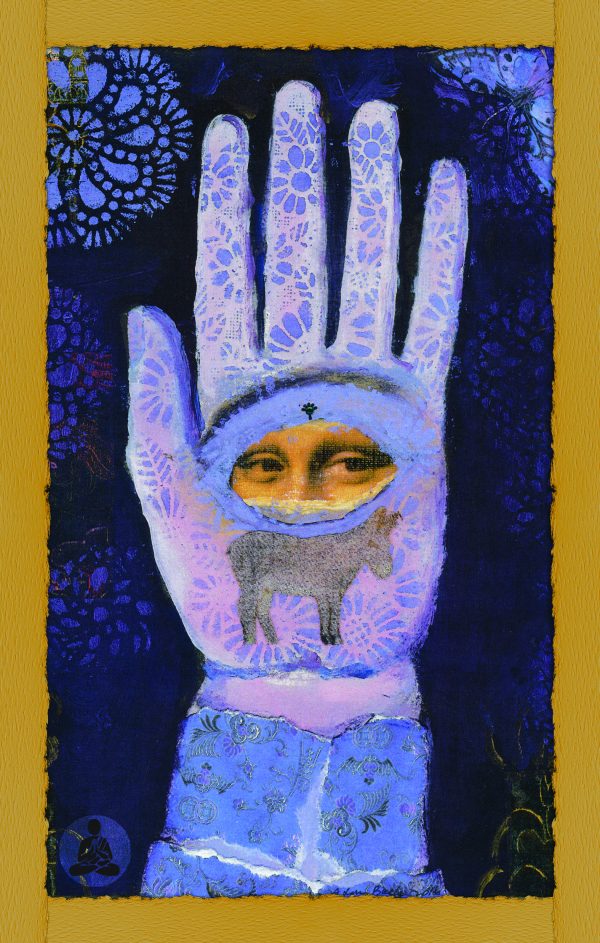If you ever look at Buddha statues, you might notice that Buddha’s hands are usually in certain set positions. These positions are called mudras, and have specific meanings. You might also come across mudras in yoga classes, where the postures are transferred from ancient statuary and ritual to modern practice.
Abigail Boehm, a yoga teacher in New Jersey, recently sent me a set of her mudra art cards. Each card features her original artwork on the front, and an explanation of the mudra’s meaning, how to form it, and meditation suggestions on the back. Very handy!
Abigail has an impressive background, including a master’s degree in science and nursing, many years as a nurse midwife, plus studies in brain science, sexual health, Ayurveda and many other mind/body/spirit areas. She did an e-interview with me to tell me more about how she designed these cards, what mudras mean to her and how other yogis can incorporate her cards into their own practice.

Abigail Boehm’s mudra cards
Teresa: How did you get interested in mudras?
Abigail: I got interested in mudras about 20 years ago, through sort a synchronistic combination of falling in love with the image of the fear not mudra, (described in #5 below) and making an art piece out of it. I created a simple image of the mudra, with a mantra in the background (which I later learned is a form of meditation called lakitha Japa); Writing a mantra over and over again to allow a form to emerge, in this case, the mudra. Personally I was experiencing some life-threatening health issues and the mudra helped me through a very rough emotional time.
Teresa: How did you create the artwork?
Abigail: All of the mudra cards are done this way, while meditating with mantra repetition. This is just what works for this creative process and I think it lends power to the images. This particular set of images are a combination of painting and collage. All the mudras are painted first then collaged into an image that is then written and painted onto. The guided meditations that I share are a combination meditations that emerge after using the mudra repeatedly.
Teresa: What do you hope people will get out of the mudra cards?
Abigail: I hope that people will experience the added quiet, focus, and stillness that mudras lend to meditation. The mudras are a language unto themselves. Each mudra has a symbolic meaning that gets tapped into when the practitioner forms and holds it. This is an ineffable experience, going far beyond words and a quality that is worth the “first hand” experience.
Teresa: What are some ways teachers use them in yoga classes?
Abigail: Teachers use the mudra cards as a way to guide meditation at the beginning and end of their classes. They are a tool to make them comfortable both using and teaching the mudras. They are also being used to guide their personal mediation experiences.
Teresa: Do you have a favorite mudra?

The Fear Not mudra, Abigail’s favorite.
Abigail: This is probably the most difficult question of all! I have a tendency to fall in love with each one as I paint, embellish and meditate with each. The Fear Not or “Abhaya” mudra is definitely a favorite, and is the image on the instruction card of the set. Basically it is a picture of a hand that is raised with all fingers extended, almost as if saying hi or gesturing a signal to “Stop!” We see it all over the place in our common signage at cross walks.



